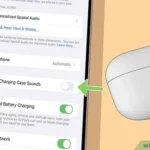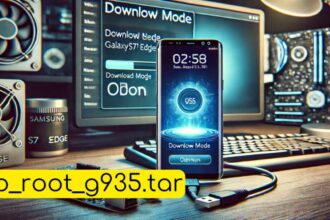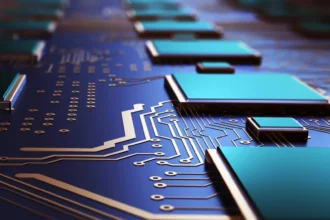Introduction to Liquid Detected in Lightning Connector
Imagine this: You’re out and about, enjoying your day, when suddenly your device flashes a warning—liquid detected in the lightning connector. Panic sets in as you wonder what that means for your beloved gadget. You might feel a rush of anxiety about potential damage or data loss. But fret not! This is a common issue many users face, and understanding how to handle it can save you from costly repairs or even total breakdowns. Let’s dive into the signs of liquid detection, why it’s problematic, and practical steps you can take to safeguard your device against future mishaps. Stay with us as we explore everything you need to know about dealing with liquid in your lightning connector efficiently and effectively.
Signs of Liquid Detection in a Lightning Connector
When your device detects liquid in the lightning connector, it often displays a warning message. This alert typically appears as “Liquid Detected in Lightning Connector.” It’s a clear indication that something is off.
Another sign to watch for is an inability to charge your device. If you notice that your charger isn’t working despite being connected, this could be linked to moisture within the port.
You might also observe unusual behavior during charging. For instance, if your phone turns on and off intermittently or shows erratic battery percentage changes, these can signal potential issues due to liquid presence.
Physical signs like corrosion or discoloration around the port are bad news. They suggest that moisture has caused damage over time. Addressing these early signs can save you from more severe problems down the line.
Why is Liquid in the Lightning Connector a Problem?
Liquid in the Lightning Connector can lead to multiple issues. First and foremost, it poses a risk of short-circuiting your device. When moisture enters the connector, it disrupts electrical flow.
This disruption can cause unexpected shutdowns or malfunctions. In some cases, it could damage internal components permanently. Your device may not charge properly, leaving you without power when you need it most.
Additionally, liquid exposure increases corrosion risks over time. Corrosion weakens connections and degrades overall performance. This gradual decline often goes unnoticed until significant damage occurs.
Furthermore, Apple devices have built-in safety features that restrict functionality if liquid is detected. This means your phone might refuse to charge until the issue resolves itself—an inconvenient situation at best.
Taking immediate action upon detection is essential for safeguarding your technology investment and ensuring continued performance.
Steps to Take if Your Device Detects Liquid
If your device detects liquid in the lightning connector, don’t panic. Start by disconnecting any accessories immediately. This prevents further damage and ensures safety.
Next, power down your device. Keeping it on could cause short circuits or other electrical issues.
Carefully inspect the charging port for visible moisture or debris. Use a soft, dry cloth to gently wipe away any excess liquid you can see.
Leave your device in a dry area with good airflow. Avoid using heat sources like hairdryers; they can cause more harm than good.
Consider waiting at least 24 hours before attempting to charge again. Patience is key here—rushing may lead to irreversible damage.
If problems persist after these steps, reaching out to a professional repair service is wise for an accurate assessment and solution.
Prevention Tips for Future Incidents
To keep your device safe from liquid damage, consider using a protective case. Look for options specifically designed to repel moisture. These cases can act as a barrier against accidental spills.
Be mindful of where you use your devices. Avoid placing them near drinks or in humid environments like bathrooms or kitchens. A little caution goes a long way.
Regularly clean the Lightning connector with soft materials to remove debris that might trap moisture. This simple step can reduce the risk of liquid getting stuck.
Invest in silica gel packets and place them in your storage area. They help absorb moisture effectively, creating a drier environment for your devices when not in use.
Common Mistakes to Avoid When Dealing with Liquid in the Lightning Connector
When you discover liquid detected in your Lightning connector, staying calm is essential. Rushing to dry it hastily can lead to more damage. Avoid using heat sources like hair dryers or ovens; they can melt components.
Don’t plug anything into the connector until it’s completely dry. This may seem tempting but could create short circuits and further complications.
Many believe that shaking the device will help expel moisture. In reality, this action might push liquid deeper inside, creating a bigger issue.
Resist the urge to disassemble your device yourself unless you’re trained for repairs. Opening up electronics without proper knowledge can void warranties and cause irreversible harm.
Conclusion: Taking Care of Your Devices and Staying Connected
Your devices are essential tools in today’s connected world. Keeping them in top shape is crucial for a seamless experience.
Regular maintenance goes a long way. Simple habits, like ensuring your hands are dry before using your device or avoiding exposure to moisture, can prevent issues with the lightning connector.
Investing in protective cases and screen covers also helps shield against accidental spills. It’s a small price for peace of mind.
Stay informed about your device’s health by monitoring any alerts or warnings it provides. This will help you catch potential problems early on.
Always have a plan for emergencies. Knowing what steps to take if liquid is detected can save you time and money down the road. Staying proactive is key to keeping your connection alive and strong.
FAQs
When dealing with the notification of liquid detected in your lightning connector, it’s important to have clarity on common queries. Here are some frequently asked questions that might help you navigate this situation more effectively.
Is it safe to use my device if I see a liquid warning?
It’s best not to use your device until you’re sure there’s no moisture present. Using it could lead to further damage.
How long does it take for the lightning connector to dry out?
Drying times can vary based on conditions such as humidity and airflow. Generally, waiting at least 30 minutes is advisable before attempting to reconnect anything.
What should I do if my device still shows a liquid detection message after drying?
If the message persists even after ensuring everything is dry, consider reaching out to Apple Support or visiting an authorized service provider for assistance.
Can I clean the lightning port myself?
While it may be tempting, using any tools or liquids can worsen damage. It’s safer and more effective to let professionals handle cleaning or repairs.
Does insurance cover water damage from a lightning connector issue?
Coverage varies by policy and provider. Check with your insurance company for specific details regarding water damage claims related to electronics.
Being proactive about maintaining your devices can save you time and money down the line. Always remember that prompt action is key when facing issues like liquid detection in connectors!

















